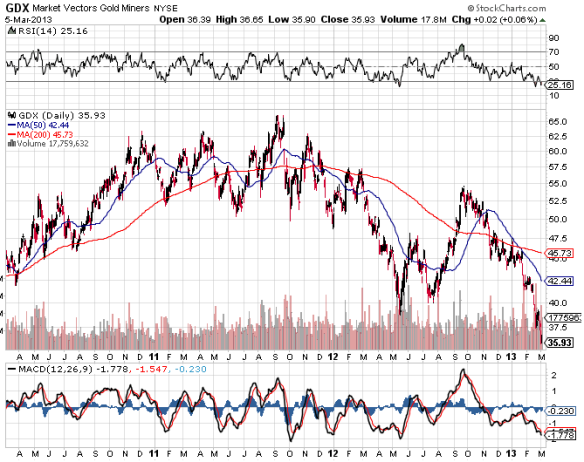This is one of those times where markets are stretched to the limit and any further upside will be minimal in relation to the extreme risk entailed. Sentiment has been dollar-bearish and risk-bullish for so long that a violent reversal is all but guaranteed. This is not to say that the absolute top is in, but that at the very least, another episode like last April-June is coming up.
Watch for a sharp sell-off in stocks, commodities and the EUR-CAD-AUD complex. Even gold and silver are vulnerable, especially silver. We could be near a secular top in silver, where the recent superspike has all but gauranteed an unhappy ending to what has been a fantastic technical and fundamental play for the last decade. Gold is much more reasonably valued and should continue to outperform risk assets because the monetary authorities are so reckless, but there is just too much froth in silver to hope for even that.
The rally since early 2009 has been not just another dead cat bounce in the bear market from 2007 (like I thought it would be), but another full-blown reflation and risk binge like the 2003-2007 cyclical bull. The secular bear since 2000 is still here, and valuations and technicals suggest that another cyclical bear phase is imminent. There is no telling how long it will take or how it will play out, but the only prudent move at times like this is to take all market risk off the table. Bears still standing should think about going fully short. Anyone holding stocks should sell or get fully hedged. History shows that the expected 10-year return on stocks from conditions like this is under 3.5%, and such a positive figure is often only acheived after a major drawdown and rebound. See John Hussman’s excellent research on the topic of expected returns from various valuation levels: http://hussmanfunds.com/weeklyMarketComment.html
Want to know what a secular bear looks like? Check out 1966-1982: a series of crashes and rallies that resulted in a 75% inflation-adjusted loss. In the absense of 70s-style inflation, this time the nominal loss should be closer to the real loss. Think Japan 1989-who knows?
The headlines this time around should have less to do with US housing, though that bear is still raging. We’re likely to hear much more about European sovereign debt, where haircuts and defaults need to happen, and Canadian, Australian and Chinese real estate. When the China construction bubble pops it will remove a major fundamental pillar from the commodities market.
There is no safe haven but cash, and cash is all the better since everyone has feared it for so long. If I had to build a bulletproof portfolio that I was not allowed to touch for five years, it would be something like this: 20% gold bullion, 25% US T-bills, 25% US 10-year notes, 25% Swiss Francs (as much as I hate to buy francs at $1.13) and 5% deep out-of-the-money 2013 SPX puts (automatic cash settlement).
There will be a great value opportunity in stocks before long (the tell will be dividend yields over 5% on blue chips). It’s just a matter of having the cash when it comes, so that you aren’t like the guy who said in 1932 that he’d be buying if he hadn’t lost everything in the crash.
–
PS – For those of you who think QE3,4,5,6 will save the markets, I’ll counter that it doesn’t matter, not on any time frame that counts. Risk appetite and private credit are what matter the most, and the Fed can’t print that. At 3AM, spiking the punchbowl doesn’t work anymore.
Or I can put it this way: the Fed has increased the monetary base from 850 billion to 2500 billion since 2007. Have your bank balance, salary and monthly bills increased 200%? If not, why should stock and commodity prices? Not even Lloyd Blankfein is 200% richer than four years ago.
















